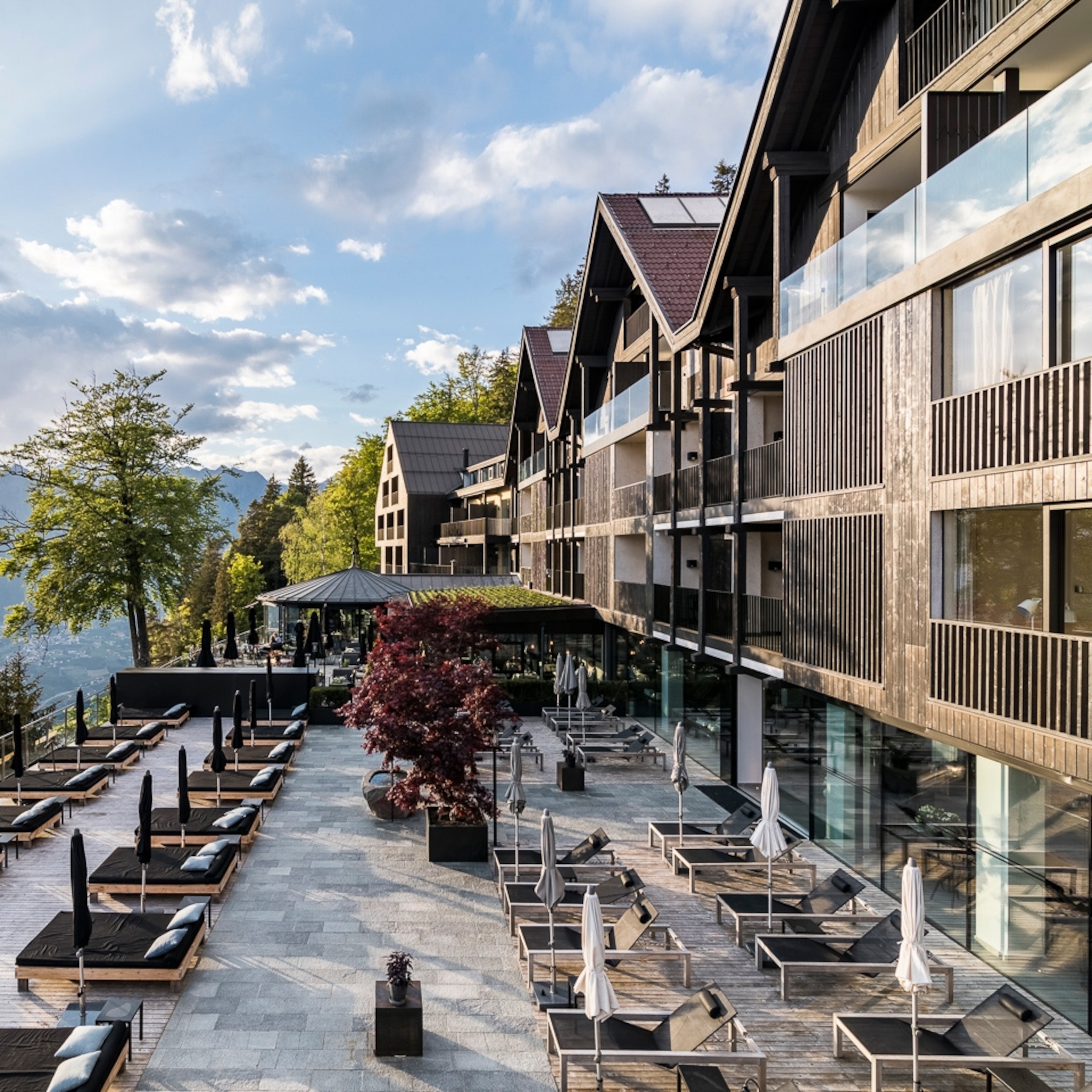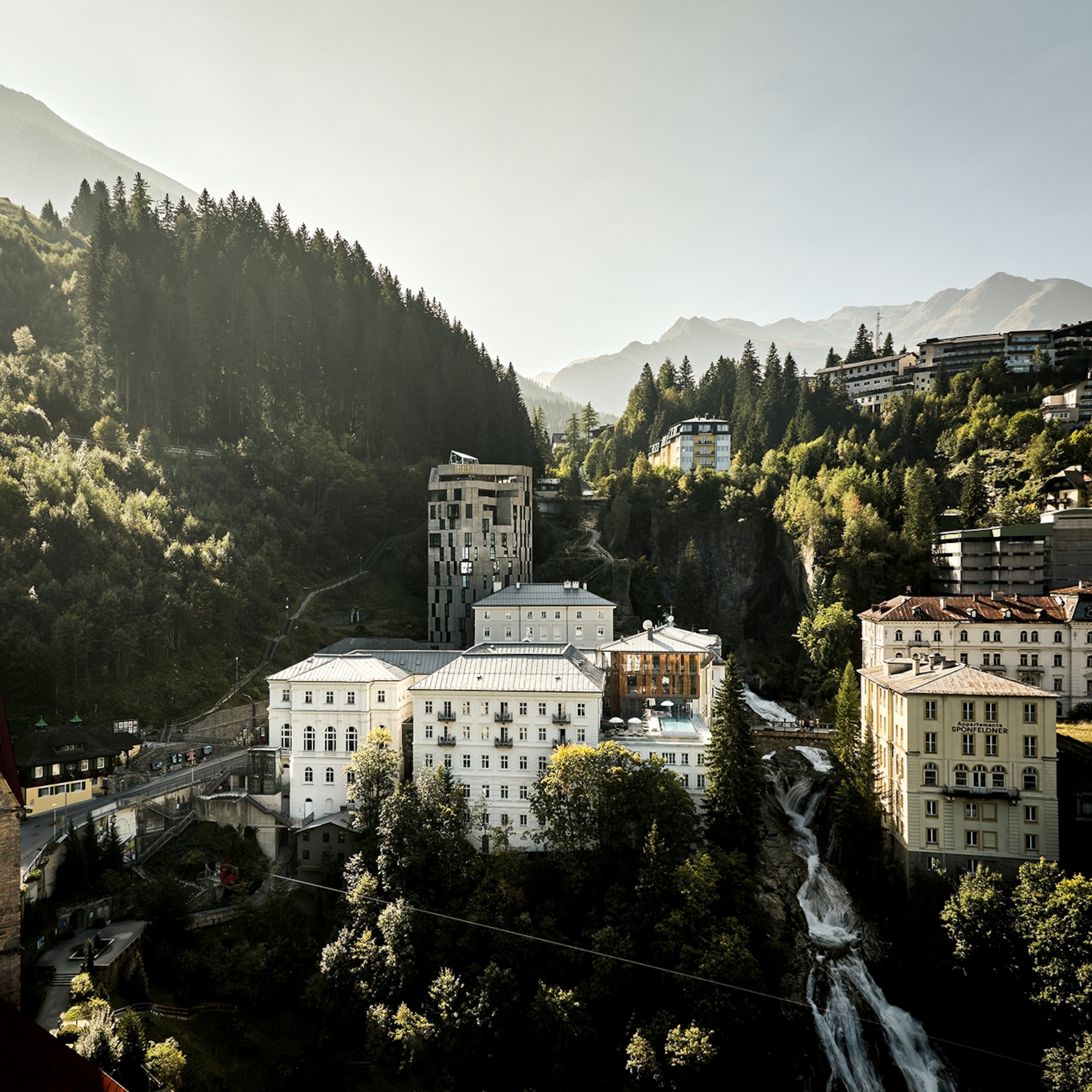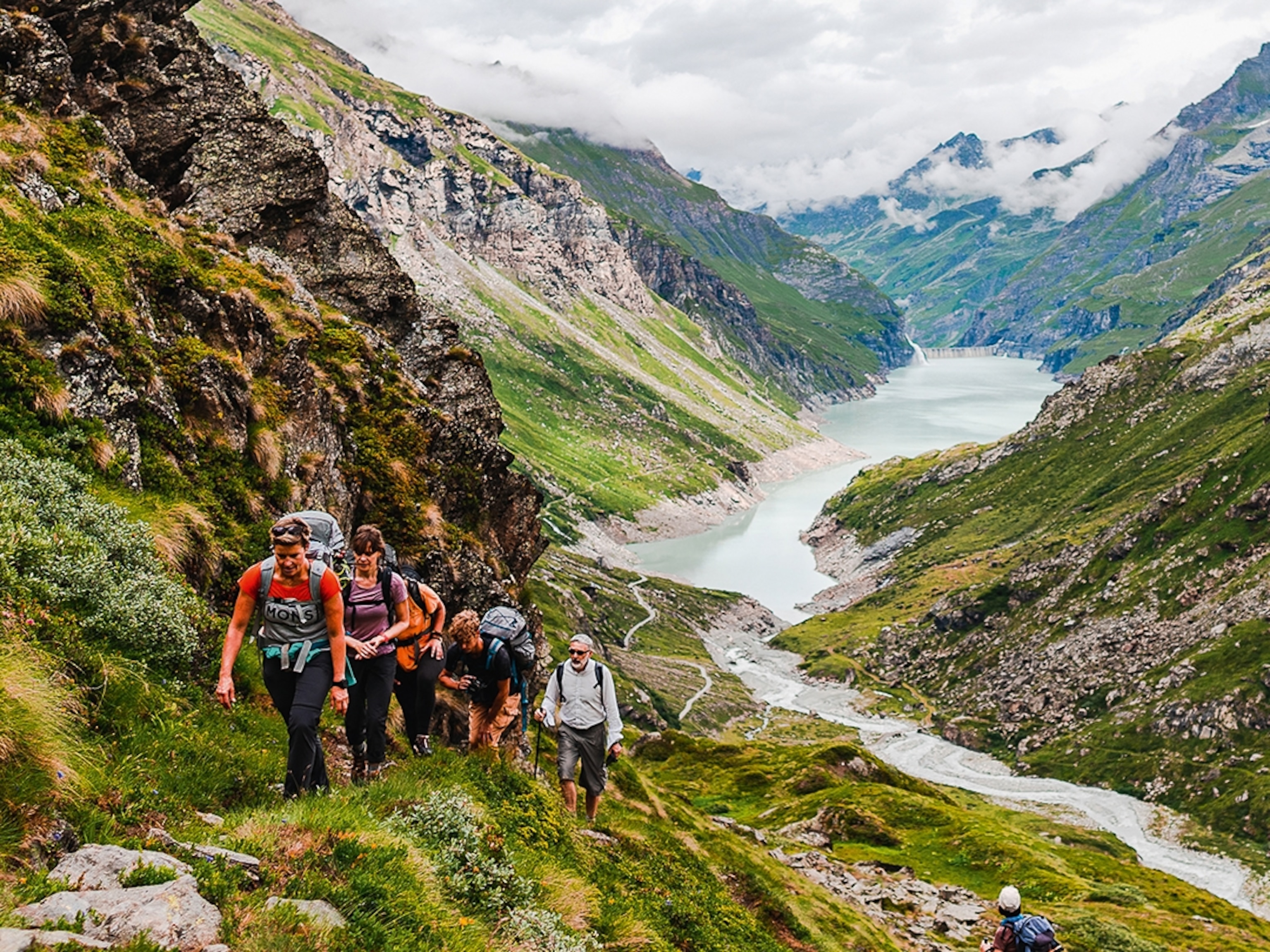The best way to experience Alpine culture? Eat—and drink—it
For thousands of years, people have survived in the Alps with traditional, straightforward food and drink. From strudel to fondue, nothing beats tasting these dishes from where they originated.
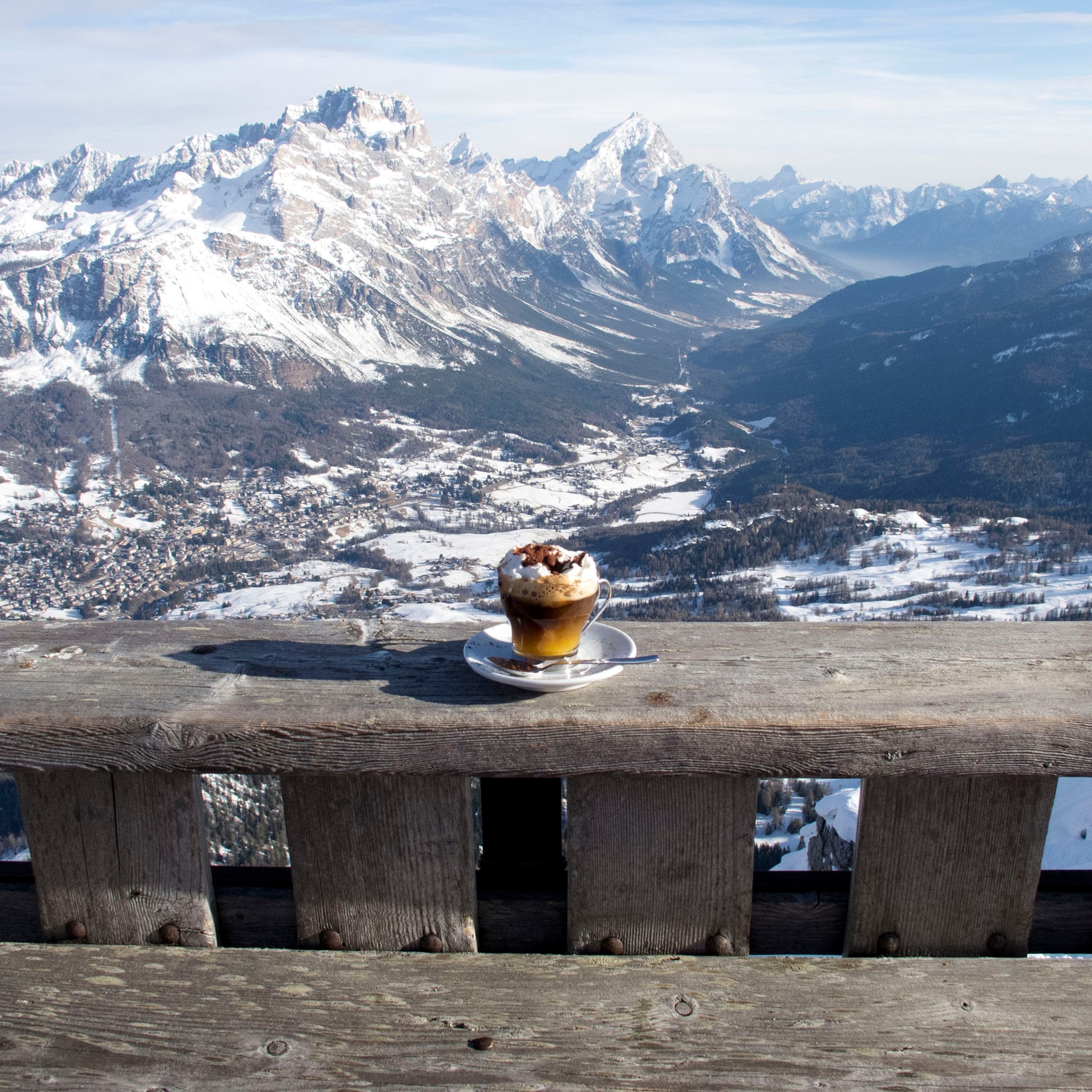
Harsh temperatures and unpredictable high-altitude soil have strengthened the roots of the Alps, and the farmers living there are as resilient as the food they grow. Here, people have survived the unimaginable: In 1916, more than 200 Austro-Hungarian World War I soldiers lived at 12,000 feet for a year inside Italy’s Marmolada Glacier, in a city of ice tunnels they dug by hand, rationing bread and meat, and, when they could get it, a soft sweet bundt cake called gugelhupf to ease their pain.
Those hidden ice trenches are now the site of another slow battle: Climate change is expected to melt the glacier completely by 2040.
Through thick and thin — traversing dangerous mountain passes in winter storms, avalanches, and in the face of climate change — lives in the Alps have depended on hearty Alpine sustenance food and drink. They ate to keep going.
It was the fresh mountain air, water, and hearty food that also led to the birth of recreational skiing in Davos, Switzerland, after wealthy British visitors came to heal from tuberculosis in the late 1800s, convincing farmers to keep their inns open for winter skiing.
(Related: Ski across the Dolomites—home of the 2026 Olympics.)
And for 2,000 years, the people here have occupied cabins built by their ancestors, baking bread to last an entire year without a single preservative.
They found the strength to survive in traditional straightforward dishes from potatoes, corn, vegetables, cured and smoked meats, aged cheeses, berries, and foraged ancient grains and herbs like mountain pine, and juniper.
“Since the Middle Ages, in the Alps, craftsmen, tradesmen, and salesmen traveled by foot for apprenticeships stopping in huts, where they would stay and eat hearty mountain food,” says Sigrid Pilchler, of the Austrian Tourist Office, adding St. Christoph Arlberg Hospiz Hotel, which is now a luxury hotel, was one of the first (it's currently closed for renovations until 2026).
Today, Alpine regions are defined by generational recipes, and food and drink is the source of pride. The best way to experience Alpine culture is hut-to-hut, eating cheesy dumplings, chunks of fatty speck bacon — cured in Tyrolean basements since the 1500s — fondue, of course, and schnaps (spelled with one p, not two).
Schüttelbrot bread
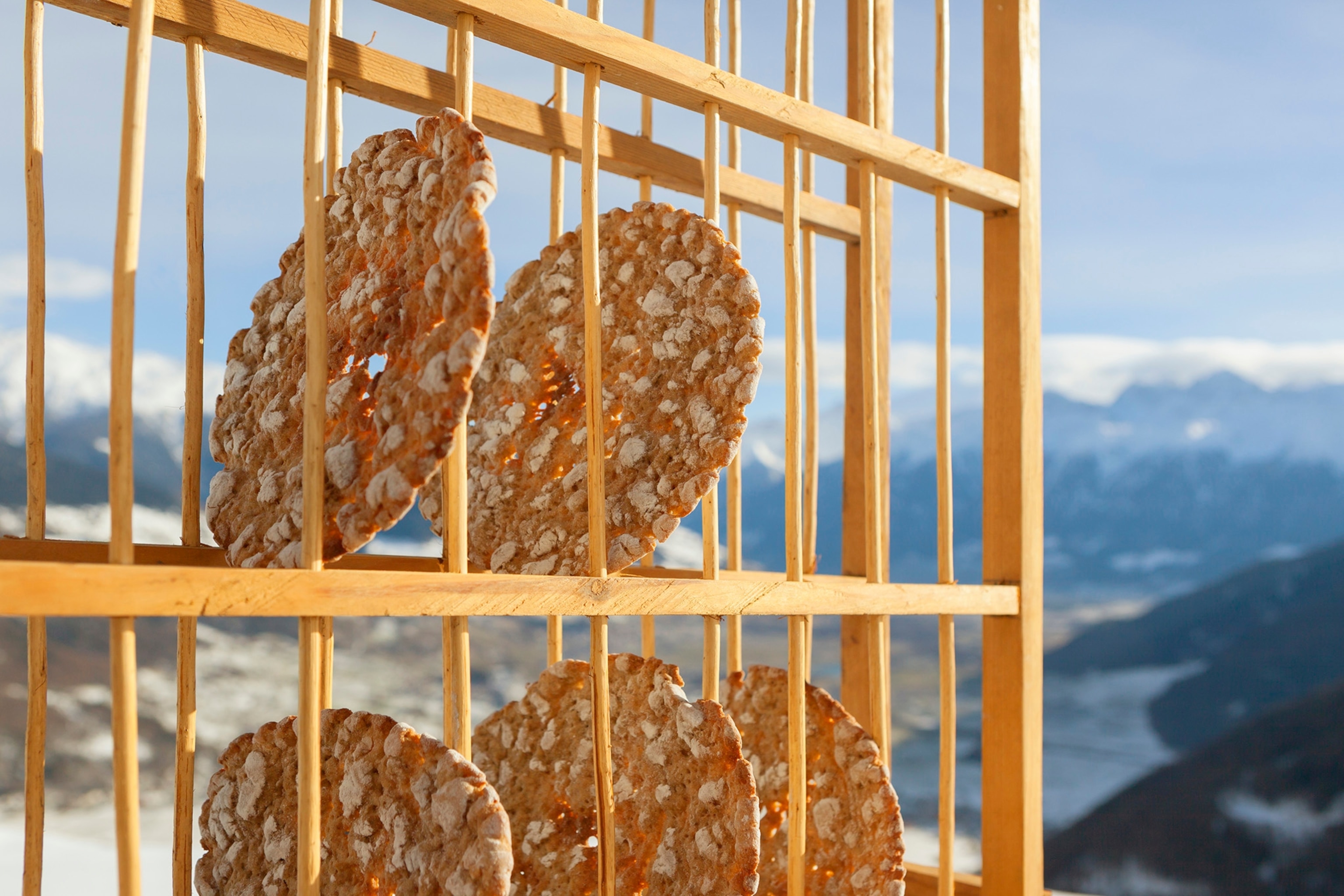
Centuries later, 30,000 people are thriving in the remote Alta Badia valleys of the Italian Dolomites, practicing customs like traditional bread baking. In one of the last two commercial kitchens of Ladin families still baking Schüttelbrot, I mixed sticky spelt, barley malt, and rye flours with hearty herbs, caraway seeds, beer yeast, and sourdough, for digestion and protein. The smell of fennel reminds me, despite the area’s Austrian, German, and Ladin influences, that I’m still in Italy.
Baker Nikolas Seppi placed his aromatic dough on a wooden paddle, spinning it outward, loosening, flattening, and drying the loaf from the inside out until it resembles a thin pita. Schüttelbrot, translating to “shake bread,” is all natural, no preservatives. “Just store it in a bag on the counter,” Seppi tells me, finally breaking the crunchy bread into pieces with his fist to eat with speck and aged alpine mountain cheese. “It will last an entire year.”
Seppi’s baking class is part of Nos Ladins, which invites visitors and locals to carry on ancient practices against the odds of modernization. In the shadows of popular Dolomiti Superski resorts, you can also learn farming, foraging, weaving, mountaineering, and the Ladin language.
You can also visit Nikolas Seppi and his family at Panificio Seppi bakery in the village of Corvara, home to Italy’s first chairlift.
Schnaps

In the après-ski capital of the world, I watched three rowdy men in turtlenecks and ski boots chase a shot of schnaps with a chunk of fatty bacon. Here in St. Anton’s old wooden alpine Sennhütte distillery, traditional schnaps with 40 percent alcohol are not for the faint of heart. The distilled fruit and herbal liqueur digestif is everywhere. Tyrol is home to more schnaps distilleries (around 4,000) per capita than any other region in the world.
Many Austrian families still mash and distill their own schnaps from backyard apple, pear, and cherry trees, with water from the snow. The “Krautinger” turnip schnaps from Wildschönau has been made since the 1700s, when an empress gave 51 farmers the exclusive rights to produce it. Only 16 farmers are still allowed to make it. (Austrian law once outlined specific standards for schnaps production, like limited labeling.)
That day, instead of bacon, I chased my pine schnaps with a dessert called kaiserschmarrn, a shredded egg-forward pancake topped with icing sugar from the owner’s family recipe.
Dumplings

Churches blend into valley landscapes between the dramatic pink rock spires of Northern Italy, and inside warming huts, dumplings take center stage. Here, there's a castle church called Hocheppan that dates back to the 12th century; inside you'll find a fresco that features a woman eating a dumpling. The earliest recipe, called knödel in German and Austrian, was written in the 15th century, and every September "Knödelfest” still celebrates dumplings in medieval Sterzing, Italy.
Rolled from stale bread, polenta, or potato with milk and sometimes egg, the dough balls are paired with Alpine regional flavors like spinach, beetroot, chive, speck, and cheese, then served in soup, with brown butter, or with a side of sauerkraut.
The dumplings at Älpele, in Lech, Austria, are worth the trek. The only way to get to this 300-year-old traditional wooden hut is by foot, snowshoe, horse-drawn carriage, or snowcat.
Apple strudel
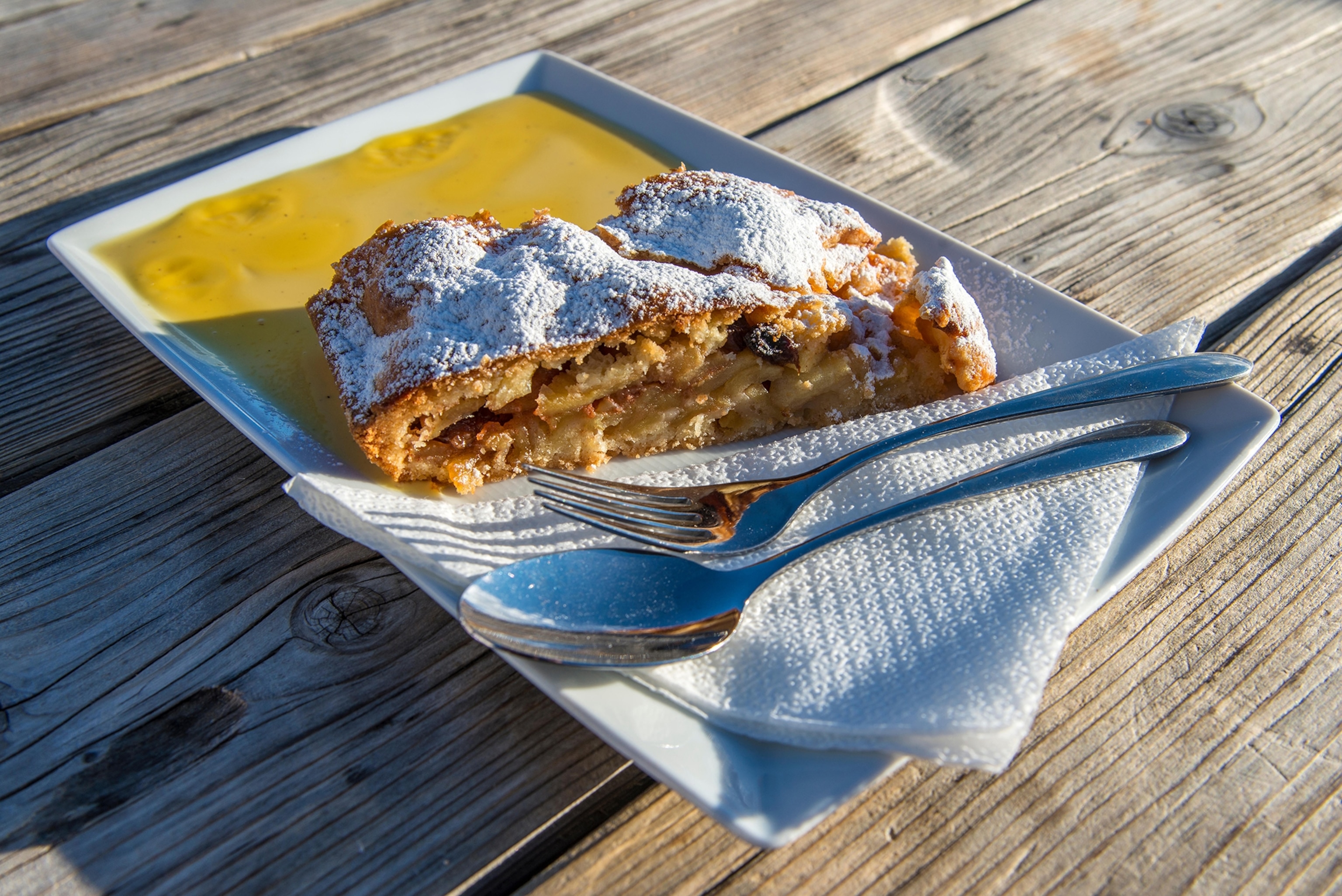
Apple strudel was the dish of Viennese nobles, and it’s still considered the national food of Austria, along with Wiener schnitzel and tafelspitz.
Now, showcased behind glass counters in most ski huts, when you’d expect cannoli or pizzelli, you’ll also find elastic layers of pastry dough hugging fresh apples, raisins, lemon juice, cinnamon, and pignoli nuts.
In the upper Val Badia region of the Dolomites, La Perla hotel was founded by Ernesto and Anni Costa. Its one-Michelin-starred restaurant, La Stüa de Michil, serves locally sourced innovations rooted in tradition, including apple strudel — but only when it’s in season.
Fondue
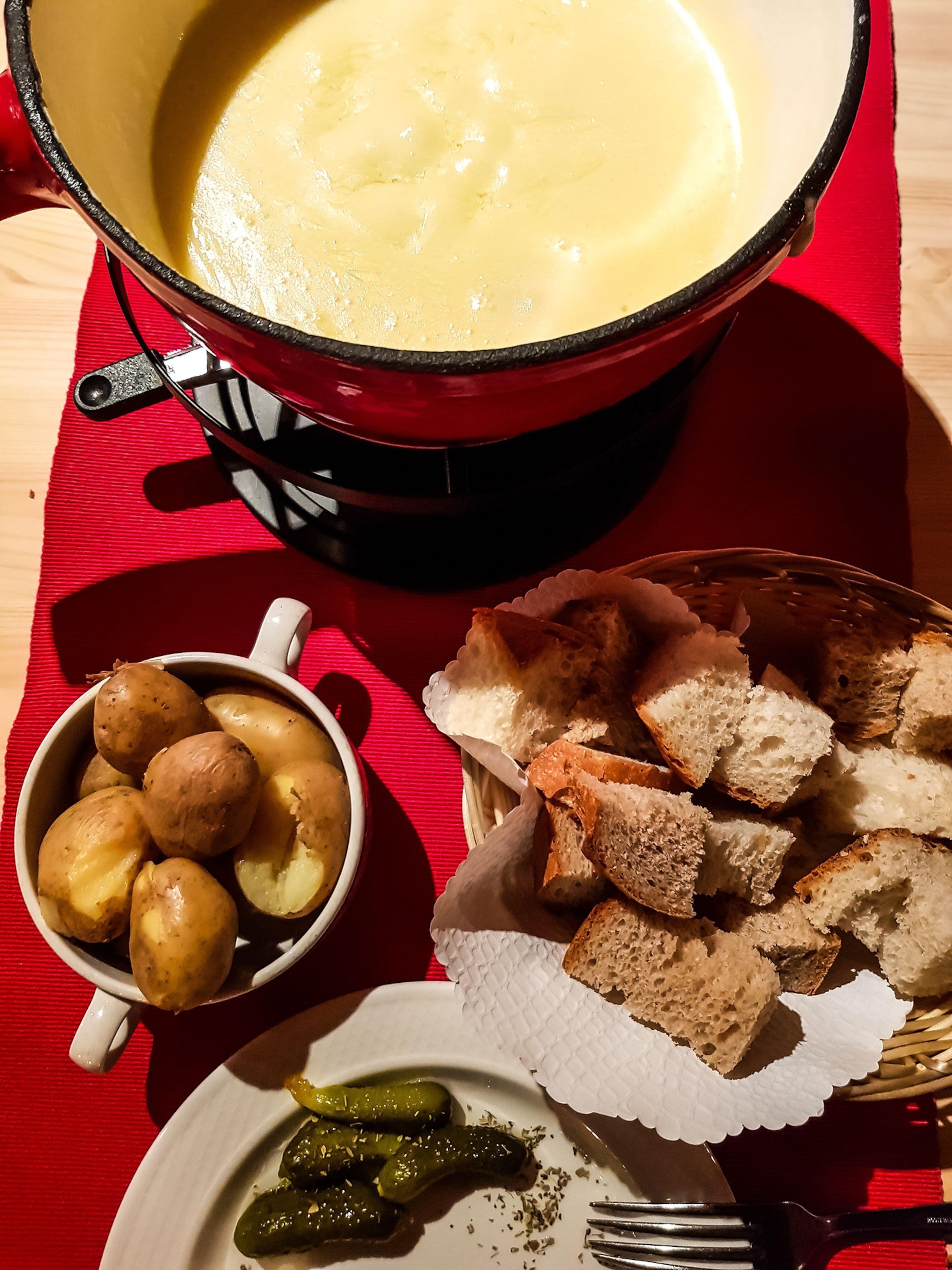

While the earliest reference describing fondue was in Homer's Iliad back in 800 to 725 BC, both the rural Alpine highlands and the French-speaking Rhone-Alpes region near Geneva take credit for modern fondue as we know it — without scrambled eggs.
When winter food supply waned, Swiss farm families gathered round the fire dipping stale bread in melted cheese rinds and whatever wine was left. It didn’t take long to name fondue the national Swiss dish in 1930, and it went on to become a symbol of Swiss unity after World War II, with fondue sets sent to military regiments. By the 1960s, fondue had made its way around the globe.
(The "Cheese King of Gstaad" shares his secrets to the perfect Swiss fondue.)
The Montana Stube in Davos, Switzerland, is still serving fondue a century after the restaurant was used as a sanatorium to heal the British from tuberculosis. Back then, it was all alpine pastures. Today, a 500-year-old Austrian farm is still standing mid-mountain in Oberlech. The Alter Goldener Berg is a traditional hut among the four restaurants of the opulent ski-in-ski-out Hotel Goldener Berg, and it's also where I soaked up history and the best fondue I’ve tasted yet.
Gugelhupf cake
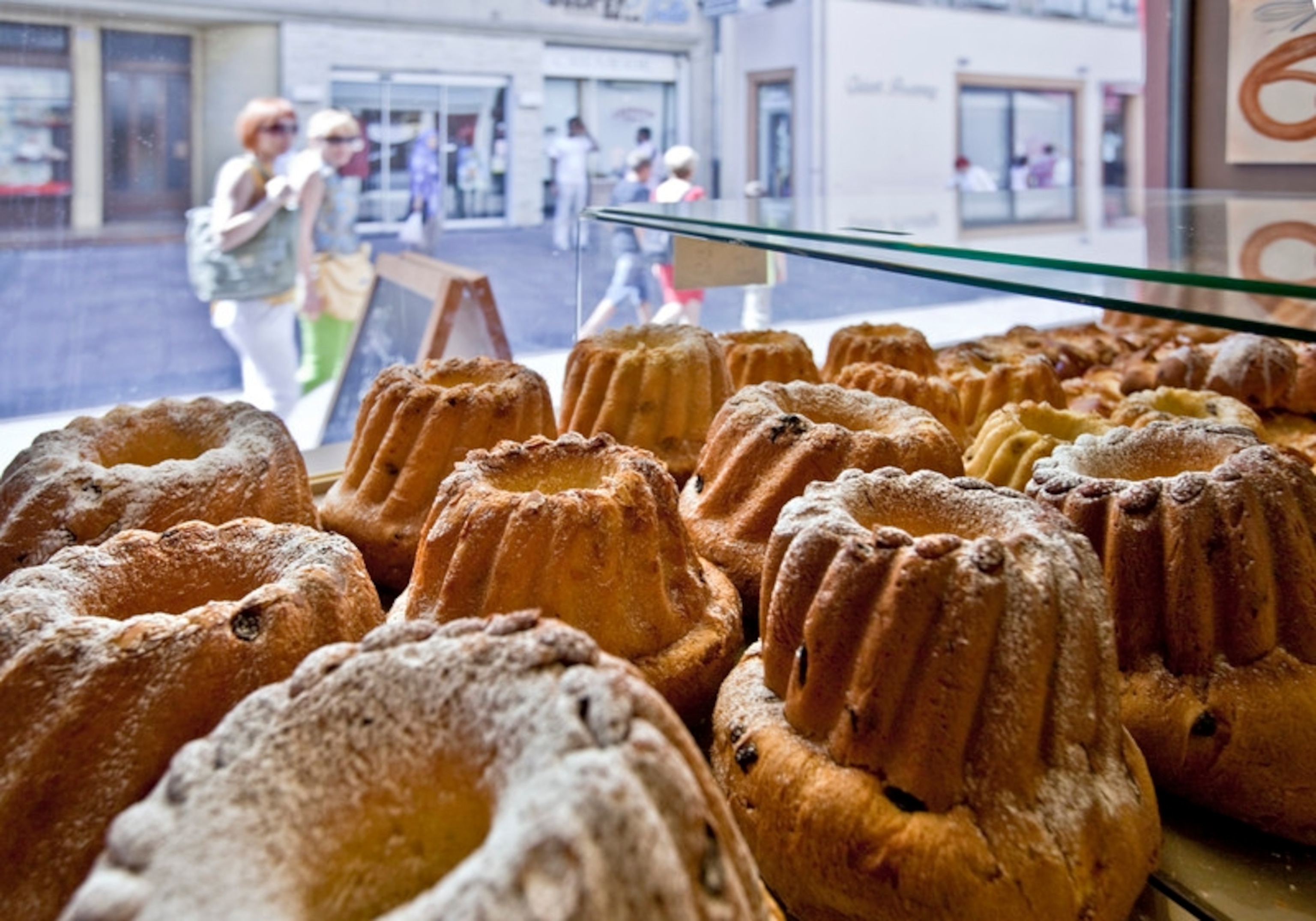
A yeasted bundt cake known as gugelhupf was rationed to Austro-Hungarian soldiers fighting a slow, strategic battle inside the Italian Dolomites’ Marmolada Glacier. The complex tunnels they dug deep within the area's highest mountain, called the “Queen of the Dolomites,” became their barracks, chapels, sanatoriums, and yes, kitchens, for eating this ring-shaped coffee cake.
Head for the ski slopes of Asitz Mountain, in Leogang, Austria, for the traditional bundt cake from the kitchen of the Forsthofgut Naturhotel, a fifth-generation hotel and restaurant oasis since 1617. This contemporary nature hideaway offers sweeping alpine views and sprawling gardens, with alpaca trekking in the summer.
